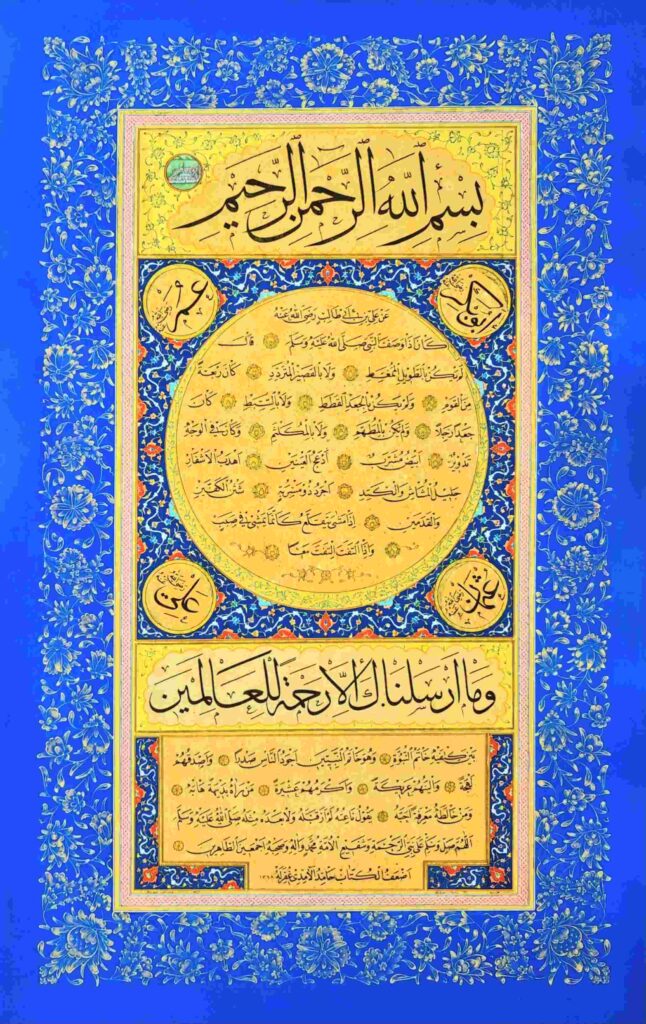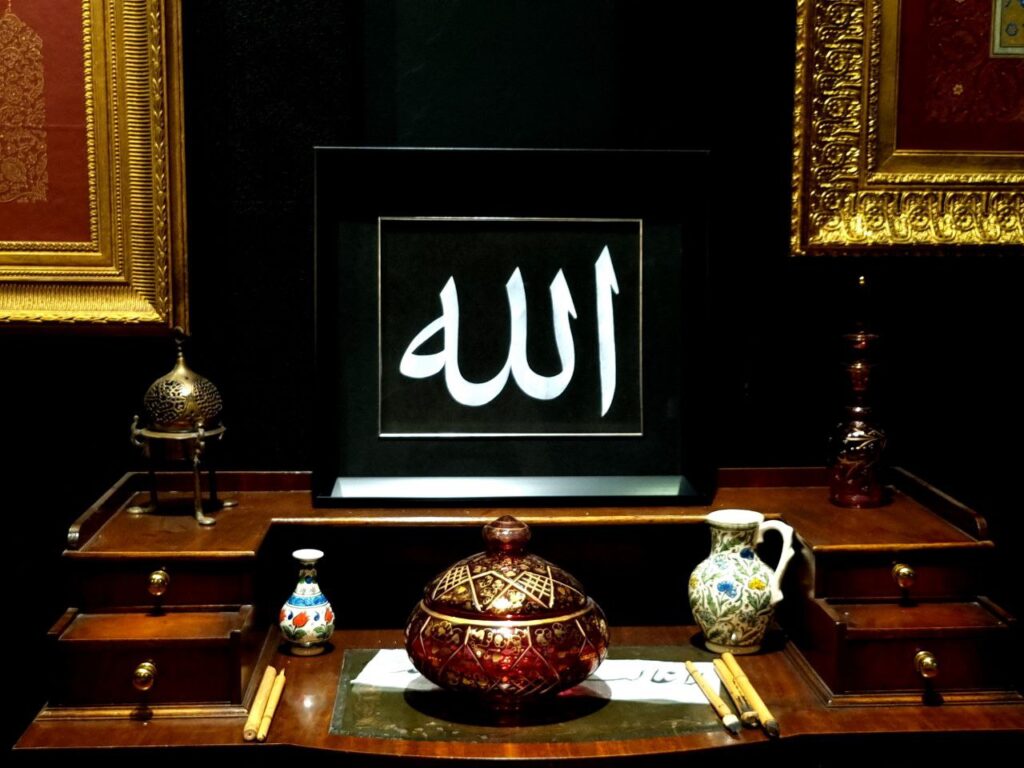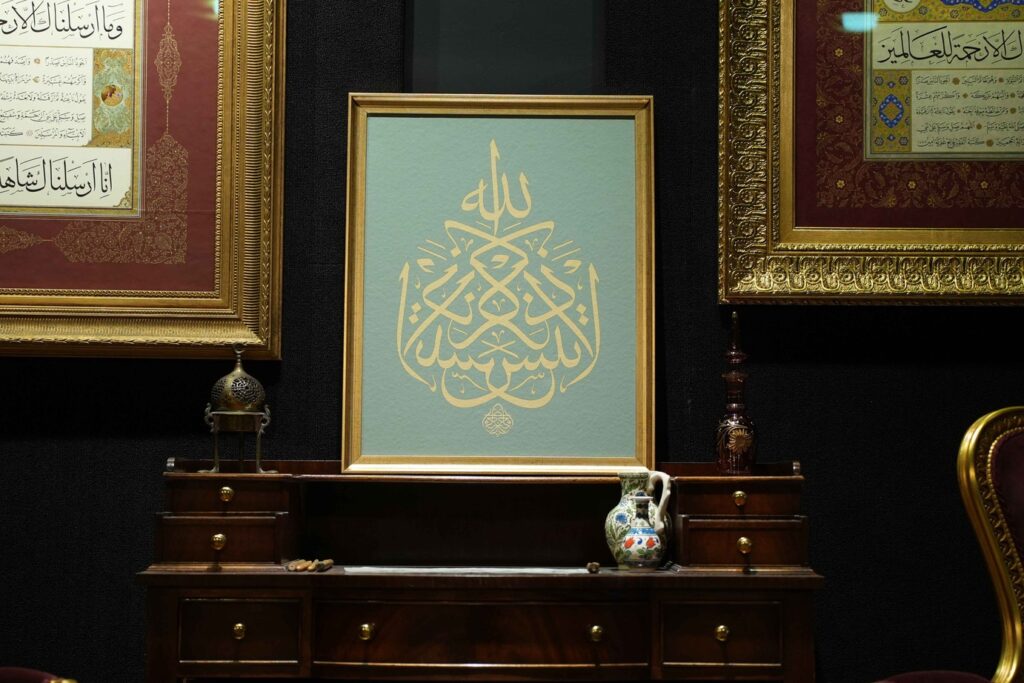The Prophetic Portrait in Blue by Hamid Aytaç (Framed)
What is the Hilya Sharif?
The Hilya Sharif, or “The Noble Description,” is an artistic expression of love and respect for Prophet Muhammad (Peace and blessings be upon him) through textual portrayals of his appearance and character. This practice honors the Prophet while adhering to Islamic tradition. Originating from accounts documented by the Prophet’s companions, the Hilya tradition evolved from simple descriptions to elaborate artistic expressions.
The Hilya’s artistic development peaked in the Ottoman era. More than just a historical artifact or beautiful artwork, the Hilya represents a universal expression of love and respect for Prophet Muhammad (Peace and blessings be upon him), transcending time and space. The Hilya Sharif endures as a symbol of Islamic art and spirituality. It demonstrates how art can connect individuals to the divine, encouraging reflection on the Prophet’s life and teachings. Continuing to inspire and guide believers, the Hilya Sharif serves as an emblem of devotion, beautifully weaving together art, history, and spiritual contemplation within Islamic culture.

Delving Deeper into its Meanings
A Closer Look at This Unique Piece

Yasin Art is Committed to Delivering High-Quality Art, Crafted With Care and a Focus on Excellence.
Hamid Aytac
1891–1982
Born in Diyarbakır as Şeyh Musa Azmî, Hamid Aytac was a legendary Turkish calligrapher. His lineage traced back to the calligrapher Âdem-i Âmidî. After studying at local schools, he moved to Istanbul in 1906 to attend the School of Law but left due to financial struggles after his father’s death. He then pursued art, studying calligraphy and painting at the School of Fine Arts. He learned rık‘a, sülüs, celî, nesih, tuğra, and ta’lik scripts from masters like Nazîf Bey, Kâmil Akdik, and İsma’il Hakkî Altunbezer, though he never formally received certification (icazet).
In 1908, he became a painting and calligraphy teacher at the Gülşen-i Ma’ârif School. He later worked at the Rüsûmât Printing House and the Mekteb-i Harbiyye Printing House before being appointed chief calligrapher at the General Staff. Around this time, he adopted the pen name “Hâmid.” After resigning post-armistice, he opened a calligraphy studio in Cağaloğlu and took over a printing house, which he operated with his wife, Âdile Hanım.
After his divorce in 1960, he closed his shop and retreated to a modest room in Reşîd Efendi Han, dedicating himself entirely to calligraphy until his death in 1982. Among his many students was Hasan Çelebi, a world-renowned calligrapher who has played a pivotal role in preserving and promoting Islamic calligraphy globally. Aytac’s legacy endures as one of Turkey’s most influential calligraphers, and his impact lives on through his students.






